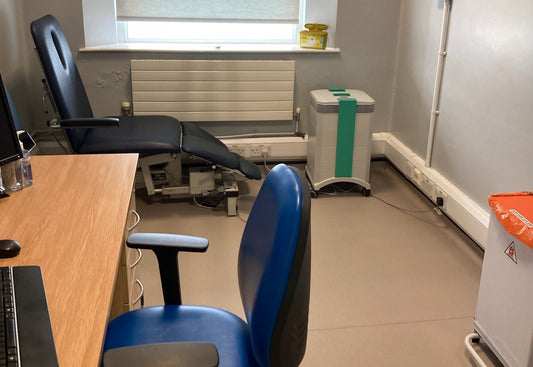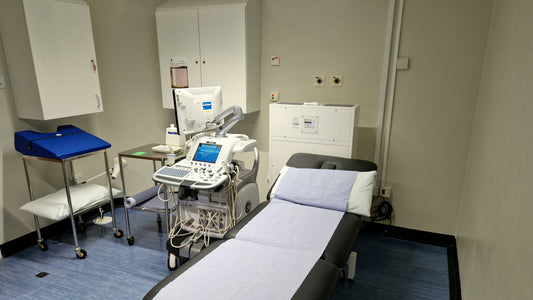Is it possible for green infrastructure to clean the air? Can ‘barrier bushes’ help to filter toxic fumes from the air? Can green infrastructure protect people from air pollution and be used as school air filtration? Some organisations and studies suggest that planting green infrastructure should be used to reduce urban air pollution. Some architectural firms advertise ‘pollution friendly buildings’ and a key defence is supposed to plant green infrastructure in front of the building such as schools - but does this actually work, i.e. will these green infrastructure actually reduce pollution in and around a building?
In this article, we look at some of the studies that have been conducted to see if the use of green infrastructure to clean the air can protect people from air pollution. What were the results? Is there scientific evidence that planting trees in front of a building will reduce airborne contamination indoors?
Green Infrastructure to control air pollution
The concept of the ‘green infrastructure’ - where trees and bushes are an integral part of urban development - is not new. It is generally defined as a network of green spaces, and features such as street trees and green roofs - that is planned, designed and managed with the hope that they will provide a range of benefits, including recreation and amenity, healthy living, reducing flooding, cooling the urban environment, encouraging walking and cycling, enhancing biodiversity and ecological resilience, and – importantly -improving air quality.
A number of policymakers are already hoping to turn the green infrastructure into a reality. For instance, in London, there is the ‘All London Green Grid’, which is a policy framework, which promotes the design and delivery of green infrastructure all across London. Meanwhile, the charity Trees for Cities is aiming to plant one million trees in urban areas by 2020.
Reduced flooding and reducing traffic will improve air quality to a certain extent, but the question remains if green infrastructure themselves/directly can reduce air pollution in any significant (or at least measurable) way, or if the improvement will, for the most part, be indirect, i.e. through encouraging people to walk rather then take a car for example.
Research regarding the ability of green infrastructure to remove air pollution
Studies do have show that some trees, shrubs, and houseplants have the ability to remove pollutants from the air by trapping them on their leaves or absorbing them through the tiny pores called stomata on the leaf surface. Some plants can also absorb gases through their roots. However, conducting research to confirm the real-life effectiveness of barrier bushes or trees in protecting people from air pollution is tricky.
Trees and bushes tend to change in size and are rarely planted as full-grown specimens. Plants can lose leaves and/or go into hibernation during parts of the year, depending on climate. Air pollution is often poorly defined, not properly differentiating between man-made and natural particulate pollution and chemical contamination. Trees and bushes themselves can be a cause of natural air pollution such as pollen, mould, and ozone. Accurately measuring for contamination can also pose a challenge, as long-term measurements are expensive and require expert knowledge and equipment.
These are just some of the factors that make an accurate verification of the ability of green infrastructure to clean the air to protect people from air pollution difficult. Looking at the relevant studies, it is clear, however, that after more than 40 years of research into the subject matter, there seem to be no consensuses on the issue, i.e. it has not been shown that green infrastructure is an effective way to help control air pollution. Some of the studies suggest that even large areas of greenery only improved ‘air pollution’ by 1 per cent.
What studies have been done and what do they say?
A study1 reported in the journal Environmental Pollution says that trees removed 17.4 million tons of ‘air pollution’ in the United States in 2010. Although this amounts - on average - was said to have had less than one per cent improvement on air quality, the researchers believe this improvement could still be significant in terms of human health.
Another study2 modelled the impact of trees in a 10 x 10 km area in the East London Green Grid (a major regeneration and development programme) as a case study. This study said that the trees removed 90.41 tons of PM10 pollution per year from the area. This translated to the avoidance of two deaths and two hospital admissions per year – a very modest improvement, considering that air pollution accounts for thousands of premature deaths in London each year.
A study called ‘Urban woodlands: their role in reducing the effects of particulate Pollution’ says that, “Quantification of the benefits of urban trees in removing particulate pollution have been calculated by McPherson et al. (1994) who estimated that the trees of Chicago removed approximately 234 tons of PM10 in 1991, improving average hourly air quality by 0.4% (2.1% in heavily wooded areas). The opportunity cost of this service was estimated at $9.2 million.
Similarly, Nowak et al. (1997) calculated that the trees of Philadelphia improved air quality by 0.72% in the process of PMm reduction. The opportunity cost of which was calculated at $1.9 million.”
“Freer-Smith and Broadmeadow (1996) also attempted quantification of the air improving properties of trees by the application of a mathematical model based on physiological and meteorological data. This model did not quantify particulate uptake but did show that urban trees could absorb significant amounts of both 03 and SO2 (up to 21 and 20% of exposure concentrations during episodes of 03 and SO2 respectively) both of which are associated with particulate forms of pollution; i.e. VOCs and sulphate.”
A study called ‘Using trees to improve air quality in cities’ estimated that 25% of the area surrounded with trees reduces particle concentrations by 10%, 50% area of trees reduces the concentration by 20%, 100% of the area with trees reduces concentration by 25%.
A number of epidemiological studies have shown that a rise in PM10 concentrations of 10 g/m3 (as a 24-hour average) is associated with an increase in mortality of 1%. “We estimate that doubling the number of trees in the West Midlands could reduce excess deaths due to particles in the air by up to 140 per year.”
Further information
- Novak DJ et al (2014). Tree and forest effect on air quality and human health in the United States. Environmental Pollution 193; 119–129
- Tiwary A et al (2009). An integrated tool to assess the role of new planting in PM10 capture and human health benefits: A case study in London. Environmental Pollution 10; 2645–2653
- The Nature Conservancy (2016). Planting Healthy Air
- Royal Horticultural Society (2017). Planting to fight pollution. The Garden December; 20–21
- How to grow fresh air – 50 Houseplants that purify your home or office. BC Wolverton




